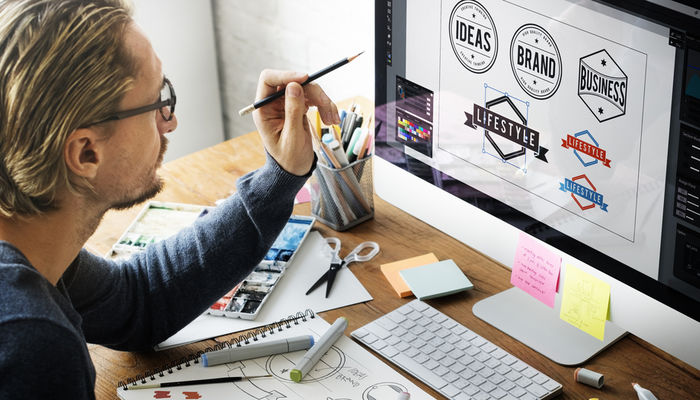
Crafting a DIY logo for your e-commerce website is a crucial step in establishing a strong brand identity.
This article presents the top 10 steps to guide you through the process, ensuring a professional and visually appealing logo that resonates with your target audience.
From researching your competitors to selecting the right color palette and typography, each step is detailed and knowledge-driven, providing you with the creative freedom to create a logo that represents your brand's values and stands out in the online marketplace.
Research Your Target Audience and Competitors
Conducting thorough research on your target audience and competitors is essential for crafting a successful DIY logo for your e-commerce website. Before embarking on the logo design process, it is crucial to analyze your target audience to understand their preferences, interests, and demographics. By conducting a target audience analysis, you can gain valuable insights into what appeals to them and tailor your logo design accordingly.
Additionally, competitive research is equally important in order to stand out in a saturated market. Analyzing your competitors' logos can help you identify trends, gaps, and opportunities for differentiation. This research allows you to create a logo that not only resonates with your target audience but also sets you apart from your competitors.
Define Your Brand Identity and Values
Developing a clear understanding of your brand identity and values, while also considering your target audience and competitors, is crucial for creating a compelling DIY logo for your e-commerce website. Your logo is the visual representation of your brand, and it should reflect your unique identity and values.
To define your brand identity, start by considering your branding strategy. Think about what sets your brand apart from others in the market and how you want to position yourself. This will help you determine the visual elements, color palette, and typography that best represent your brand.

Additionally, understanding your target audience is essential for effective brand positioning. Consider their preferences, values, and aspirations, and tailor your logo accordingly.
Brainstorm Logo Ideas and Concepts
During the initial phase of logo creation, take the time to brainstorm various ideas and concepts that align with your brand identity and values. This is a crucial step in the logo design process as it sets the foundation for the entire project.
Start by gathering inspiration from different sources such as competitor logos, industry trends, and even unrelated artworks. Explore various styles, colors, and symbols that resonate with your brand's personality and message.
Think about the emotions you want your logo to evoke and the impression you want to leave on your audience. Consider the values and beliefs that define your brand and find creative ways to incorporate them into your logo design.
This brainstorming process will help you generate a range of concepts to choose from and ensure that your final logo accurately represents your brand.
Choose the Right Color Palette
When it comes to crafting a DIY logo for your e-commerce website, one crucial step is choosing the right color palette.
Color psychology plays a significant role in branding, as different colors evoke specific emotions and associations.
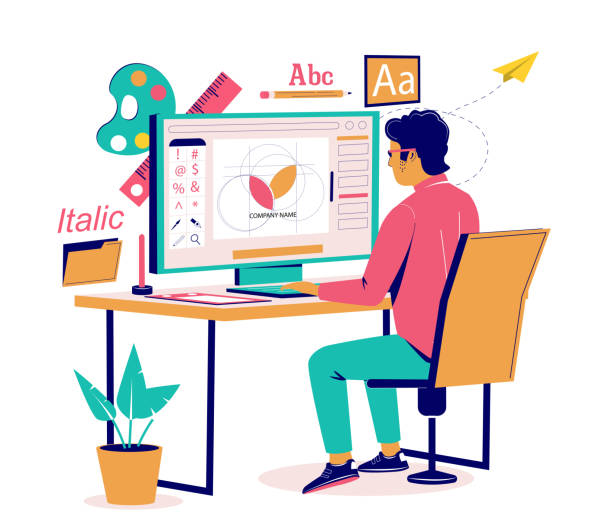
Harmonizing color combinations is essential for creating a visually appealing and cohesive logo.
Additionally, the impact of color choice should not be underestimated, as it can greatly influence how customers perceive your brand and its values.
Color Psychology in Branding
One crucial aspect of branding is selecting the appropriate color palette, as it plays a significant role in evoking specific emotions and perceptions about a company or product. Color symbolism and the emotional impact of colors are key factors to consider when choosing the right color palette for your e-commerce website.
Different colors have different meanings and can create different moods and associations. For example, blue is often associated with trust, reliability, and calmness, making it a popular choice for financial institutions and healthcare organizations.
On the other hand, red is often associated with passion, excitement, and urgency, making it a suitable choice for e-commerce websites that want to create a sense of urgency and encourage impulse purchases.
Understanding the psychology behind colors can help you make informed decisions and create a visual identity that resonates with your target audience.
Harmonizing Color Combinations
Selecting the appropriate color palette for your e-commerce website requires careful consideration of harmonizing color combinations that will effectively convey your brand identity to your target audience. The colors you choose can greatly impact how your website is perceived, as different colors have different meanings and associations.
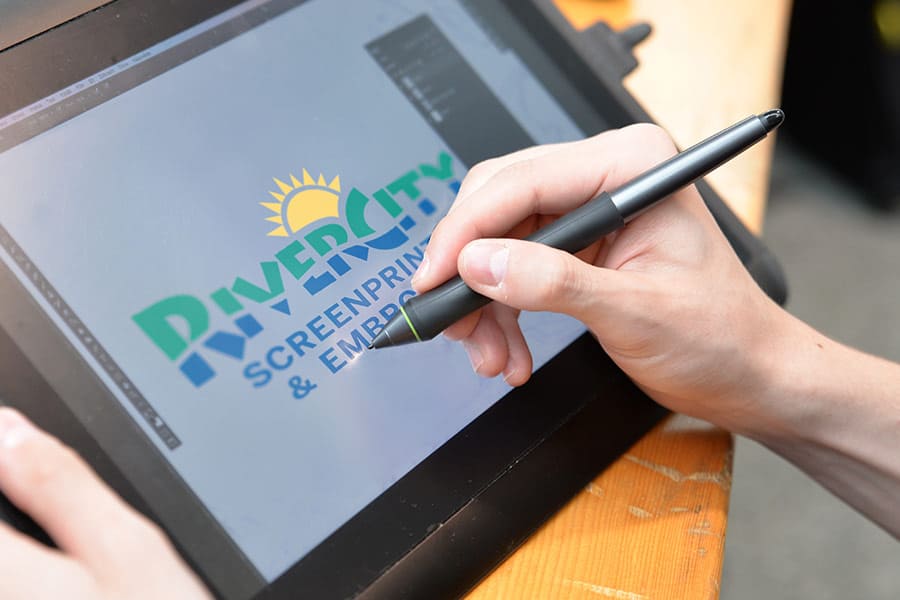
To create a harmonious color palette that resonates with your brand and appeals to your audience, consider the following:
Color symbolism: Understand the meaning and associations of different colors. For example, blue can convey trust and professionalism, while green is often associated with nature and freshness.
Color theory: Use color theory principles to create a visually appealing palette. Consider using complementary colors (opposite on the color wheel) or analogous colors (next to each other on the color wheel) for a balanced and harmonious effect.
Contrast: Ensure there is enough contrast between the colors you choose to enhance readability and user experience.
Consistency: Maintain consistency in your color palette throughout your website to create a cohesive and unified brand identity.
Impact of Color Choice
To effectively communicate your brand's message and create a visually appealing logo, it is crucial to carefully consider the impact of color choice and choose the right color palette. Colors have a profound impact on human emotions and perception, making them a powerful tool in logo design.
Each color carries its own symbolism and can evoke specific emotions or associations. For example, blue is often associated with trust and stability, while red can signify energy and passion. It is essential to understand the psychology behind colors and how they can be used to convey your brand's values and personality.
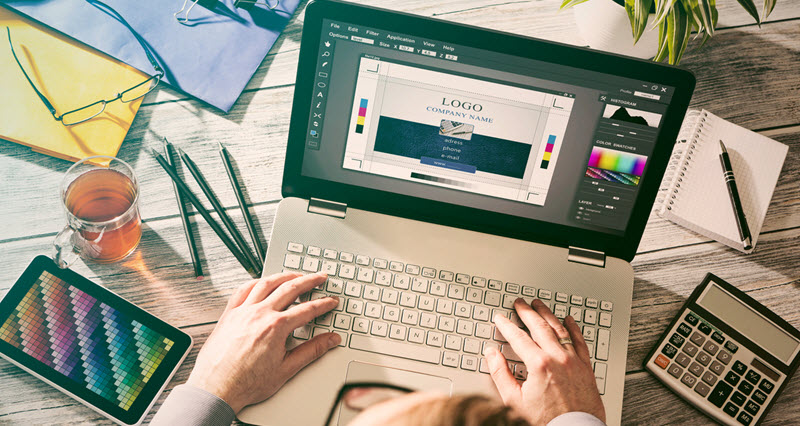
Additionally, staying up-to-date with current color trends in logo design can help your logo appear modern and relevant. Experiment with different color combinations and consult color trend reports to create a logo that captivates your audience and represents your brand effectively.
Select a Suitable Font or Typography
When it comes to selecting a suitable font or typography for your e-commerce website logo, there are a few important tips to keep in mind.
Firstly, choose a font that aligns with your brand's identity and values. The right typography can help convey the right message to your target audience and create a memorable visual impact.
Additionally, it's crucial to understand the impact that font choice can have on your overall brand perception and recognition. By carefully selecting the right font, you can enhance the professionalism and credibility of your e-commerce website.
Font Selection Tips
Optimize your e-commerce website's logo by carefully curating a font that aligns with your brand identity and conveys the desired message. Font selection plays a crucial role in creating a visually appealing and impactful logo. Here are some font selection tips to help you make the right choice:
Consider your brand personality: Choose a font that reflects the personality and values of your brand. Whether you want to convey elegance, playfulness, or professionalism, the font should align with your brand's identity.
Ensure readability: While experimenting with unique fonts can be tempting, it's important to prioritize readability. Make sure the font is clear and legible, even at different sizes and on different devices.

Avoid excessive font pairing: Using too many fonts can make your logo appear cluttered and unprofessional. Stick to one or two fonts that complement each other and create a cohesive visual identity.
Avoid common font selection mistakes: Stay away from overused fonts, outdated styles, and cliché typography. Aim for a font that stands out and brings a fresh perspective to your logo design.
Typography for Brand Identity
Font selection plays a crucial role in establishing a strong brand identity. It is essential to choose a suitable font or typography that accurately represents your e-commerce website. Typography trends are constantly evolving, and it's important to stay updated to create a modern and visually appealing logo.
When selecting a font, consider the personality and tone of your brand. Are you aiming for a sleek and minimalist look or a playful and whimsical feel? Additionally, consider the readability and legibility of the font, especially when it comes to small sizes or different backgrounds.
There are various typography tools available that can assist you in finding the perfect font for your logo. These tools often provide a wide range of font options and allow you to experiment with different styles and combinations.
Stay open to exploring different typography trends to create a unique and eye-catching logo for your e-commerce website.
Impact of Font Choice
To ensure a visually appealing and cohesive brand image, it is crucial to carefully select a suitable font or typography that will have a significant impact on the overall perception of your e-commerce website's logo. The choice of font can greatly affect the mood, personality, and message conveyed by your logo.
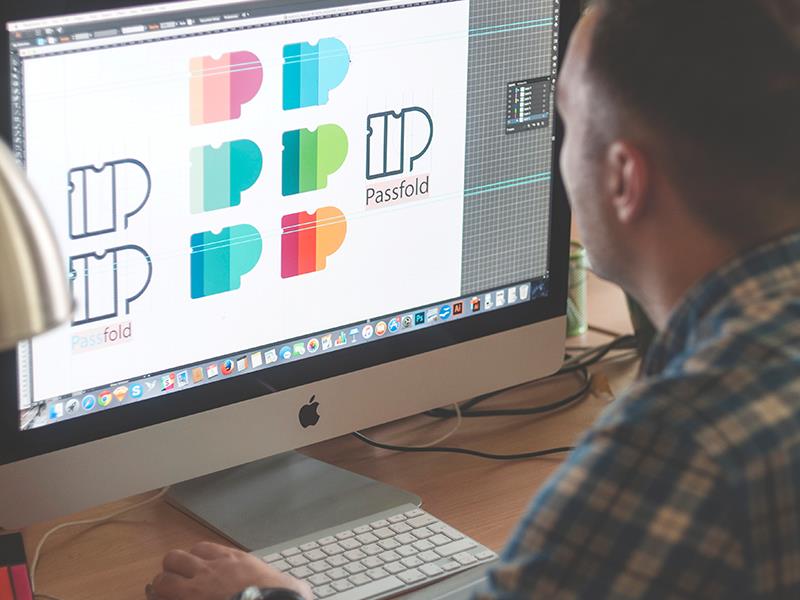
Here are four important factors to consider when choosing the right font for your e-commerce website's logo:
Font psychology: Different fonts evoke different emotions and associations. For example, serif fonts are often associated with tradition and elegance, while sans-serif fonts convey a modern and clean aesthetic. Understanding the psychological effects of different fonts can help you align your logo with your brand's desired image.
Font readability: It is important to choose a font that is legible at different sizes and across various platforms. A font that is too fancy or intricate may hinder readability, especially when displayed on smaller screens or in print materials.
Consistency: Selecting a font that complements your overall brand identity and matches the style of your website can help create a cohesive and professional look. Consistency in font choice across your logo, website, and marketing materials will strengthen your brand recognition and make your e-commerce business appear more polished.
Unique and memorable: In a competitive e-commerce landscape, it is essential to stand out from the crowd. Choosing a font that is unique, distinctive, and memorable can help your logo leave a lasting impression on potential customers.
Sketch and Create Initial Logo Designs
During the initial stages of logo design, it is essential to sketch and create various logo designs to explore different possibilities and concepts. Logo sketching techniques play a crucial role in the creative process, allowing designers to experiment with different shapes, symbols, and typography. This stage is where ideas are born and nurtured, giving designers the freedom to explore their creativity.
When sketching, it is important to keep in mind the target audience and the message the logo should convey. Start by brainstorming and doodling different ideas, allowing your imagination to flow freely. Explore different styles, layouts, and color combinations. Don't be afraid to think outside the box and challenge traditional design conventions.
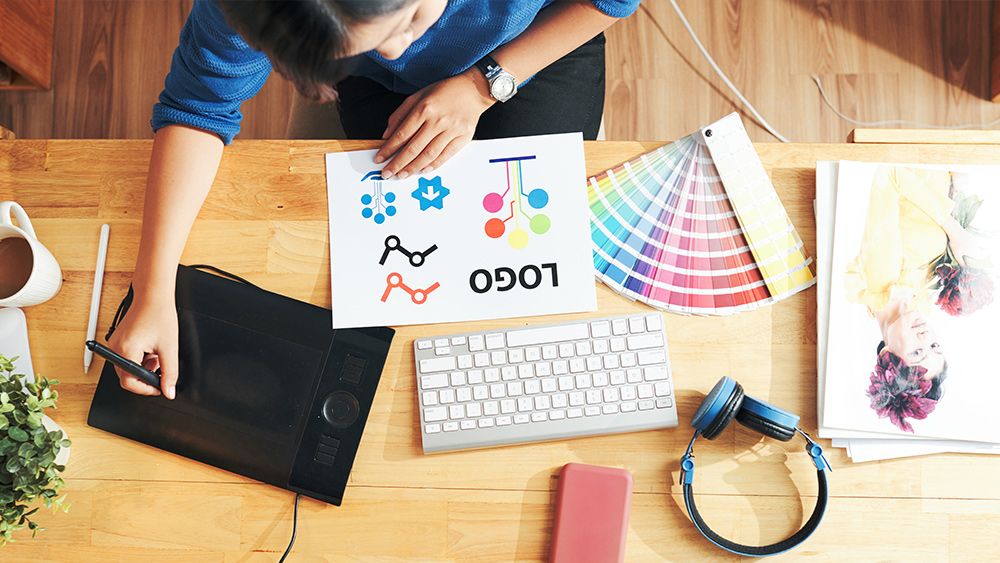
Experiment With Different Layouts and Arrangements
When it comes to crafting a DIY logo for your e-commerce website, one of the key factors to consider is the layout. The layout of your logo can greatly impact its effectiveness in conveying your brand message and capturing the attention of your target audience.
Layouts for Effective Logos
The layout of a logo plays a crucial role in its effectiveness and should be experimented with different arrangements to find the most impactful design. When it comes to layouts for effective logos, simplicity is key. A cluttered and complicated layout can confuse viewers and fail to make a lasting impression.
To create an effective logo layout, consider the following:
Symmetrical Layout: A symmetrical layout creates a sense of balance and harmony. It is visually pleasing and gives a professional and organized feel to the logo.
Asymmetrical Layout: An asymmetrical layout can add an element of surprise and creativity to the logo. It can make the design stand out and create a sense of dynamism.
Grid-based Layout: A grid-based layout helps to align elements and maintain consistency in the design. It provides a structured and organized look to the logo.
Negative Space Layout: Utilizing negative space in the logo design can create depth and make the logo more memorable. It adds an element of intrigue and can be a clever way to convey multiple meanings.

Arrangements for Visual Impact
An effective way to create visual impact in your logo design is to experiment with different layouts and arrangements. Visual composition plays a crucial role in capturing the attention of your audience and conveying the message of your brand. By strategically arranging graphic elements, you can create a logo that is both visually appealing and memorable.
When it comes to arranging your logo, think about the balance and symmetry of the design. Consider the placement of each element and how they interact with one another. Experiment with different layouts to find the one that best represents your brand identity.
Remember to keep your audience in mind throughout the design process. Think about how different arrangements can evoke certain emotions or convey specific messages. By exploring various layouts and arrangements, you can create a DIY logo that is not only visually impactful but also aligns with your brand's vision and values.
Refine and Finalize Your Logo Design
After carefully considering the various design elements, it is crucial to proceed with refining and finalizing your logo for optimal impact. This stage is where you polish your logo and make it ready for the world to see. Here are four important steps to help you refine and finalize your logo design:
Simplify: Simplify your logo by eliminating any unnecessary elements or details. Remember, simplicity is key in creating a memorable and effective logo.
Typography: Choose the right font that complements your logo design and aligns with your brand identity. Experiment with different fonts and sizes to find the perfect balance.
Colors: Select a color palette that reflects your brand's personality and resonates with your target audience. Use colors strategically to evoke emotions and create a strong visual impact.
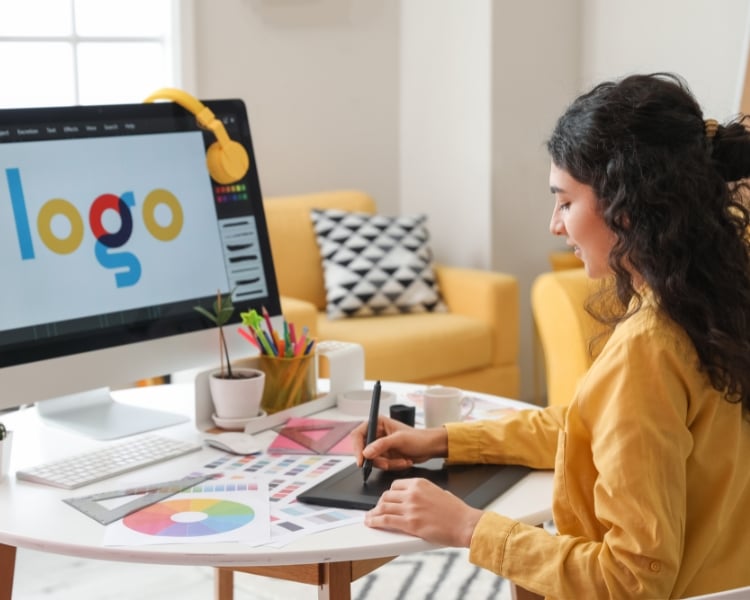
Test and Iterate: Once you have refined your logo design, test it across different mediums and sizes to ensure its scalability and readability. Gather feedback from trusted sources and make necessary adjustments until you are satisfied with the final result.
To ensure the compatibility and visual appeal of your logo, it is essential to test it across various devices and platforms while considering factors such as screen resolutions and responsiveness.
Testing your logo on different devices will help you ensure that it appears correctly and maintains its visibility across all screen sizes. This step is crucial because your logo will be the face of your e-commerce website and needs to look good on smartphones, tablets, laptops, and desktop computers.
Additionally, testing your logo on different platforms will allow you to analyze user feedback and make improvements if necessary. By conducting thorough tests, you can ensure that your logo is visually appealing, easily recognizable, and leaves a positive impression on your target audience, regardless of the device they are using.
Implement Your DIY Logo on Your E-commerce Website
Integrating your DIY logo seamlessly onto your e-commerce website requires careful consideration of design elements and strategic placement. Here are four key steps to implementing your DIY logo design and optimizing logo placement:
Choose the right size: Ensure that your logo is neither too small nor too large. It should be clearly visible and proportionate to the other elements on your website.
Place it strategically: Position your logo in a prominent location, such as the top left corner of your website. This is where users expect to find it and it helps establish brand recognition.
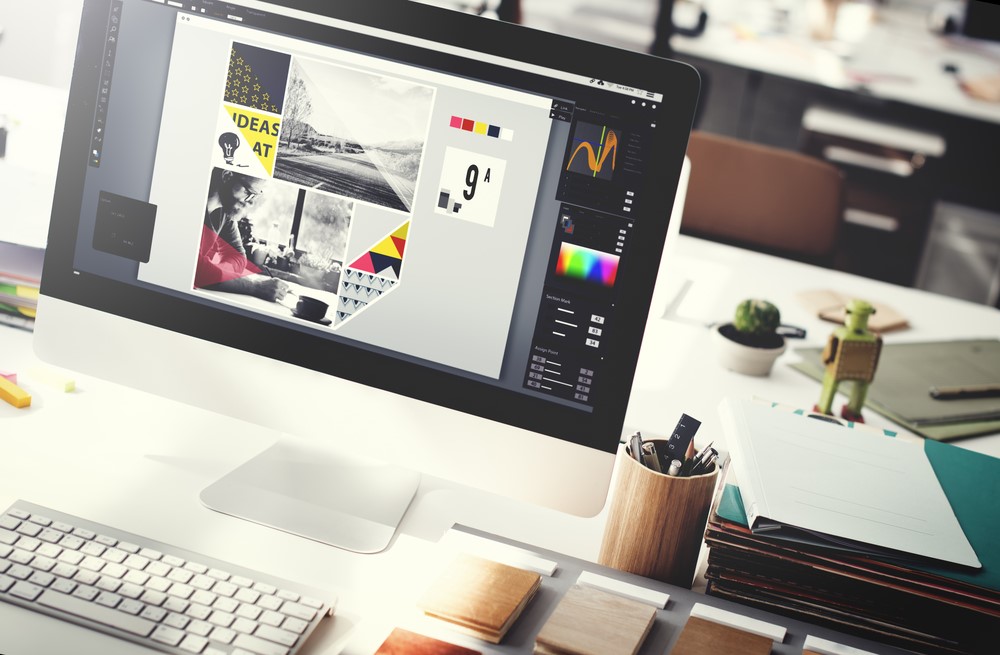
Use contrasting colors: Make sure your logo stands out by using colors that contrast with your website's background. This will make it easy to spot and enhance its visibility.
Optimize for responsiveness: Ensure that your logo looks great on all devices and screen sizes. Test it across different devices to ensure it remains clear and legible.
Frequently Asked Questions
How Can I Protect My DIY Logo Design From Being Stolen or Copied by Others?
To protect your DIY logo design from being stolen or copied, it is essential to take measures to prevent copyright infringement. This can be achieved through registering your logo with the appropriate authorities and using watermarks or digital signatures to deter unauthorized use.
What Are Some Common Mistakes to Avoid When Designing a DIY Logo for an E-Commerce Website?
When designing a DIY logo for an e-commerce website, it is important to avoid common mistakes that can undermine its effectiveness. These mistakes can include poor font choices, overcrowding, lack of scalability, and failing to align with the brand's identity.
Are There Any Legal Considerations or Copyright Issues I Should Be Aware of When Creating My Own Logo?
When creating your own logo for an e-commerce website, it is crucial to consider legal aspects and potential copyright issues. This includes ensuring your logo does not infringe on any trademarks and understanding the legal implications of using certain elements or designs.
How Can I Ensure That My DIY Logo Is Unique and Stands Out Among Competitors?
To ensure a DIY logo is unique and stands out, focus on creating a brand identity that reflects your e-commerce website's values. Draw inspiration from various sources, such as industry trends and competitors, while adding your own creative touch for a distinct logo design.
What Are Some Effective Strategies for Incorporating the Logo Into My E-Commerce Website's Overall Design and Branding?
Incorporating a logo into an e-commerce website's overall design and branding requires careful consideration of color schemes, placement, and consistency. Effective strategies include ensuring the logo is visually prominent, aligning with the brand's message, and creating a seamless user experience.
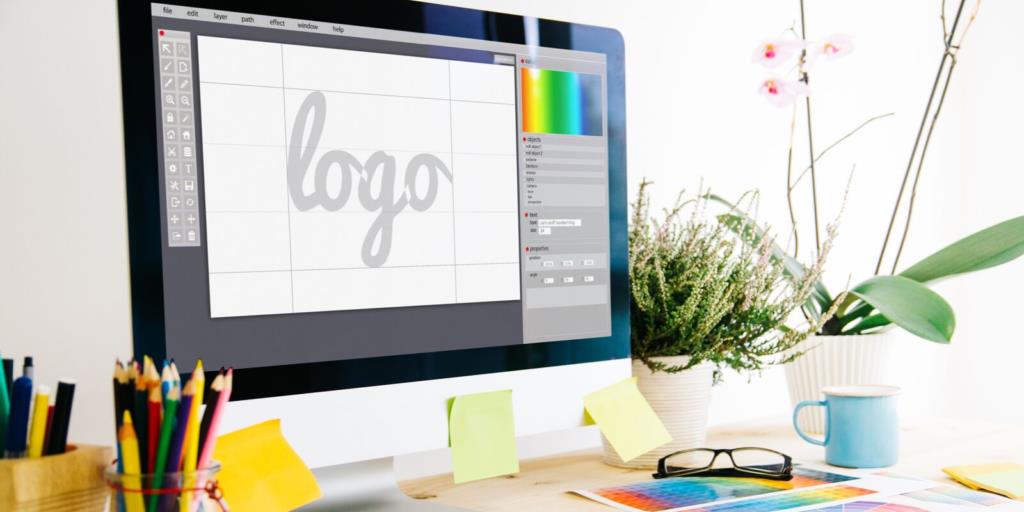
 Digital Art InstructionDIY Infographics DesignMobile Game ArtworkPersonalized Logo Design3D AnimationeBook Covers DesignPrivacy PolicyTerms And Conditions
Digital Art InstructionDIY Infographics DesignMobile Game ArtworkPersonalized Logo Design3D AnimationeBook Covers DesignPrivacy PolicyTerms And Conditions
